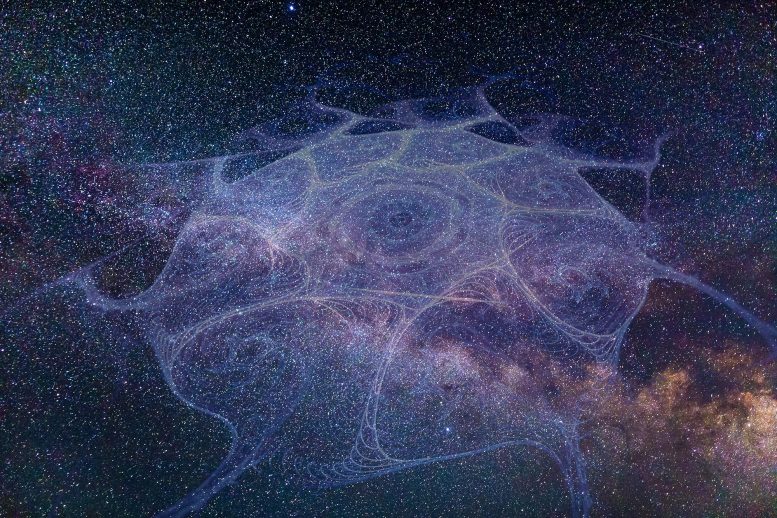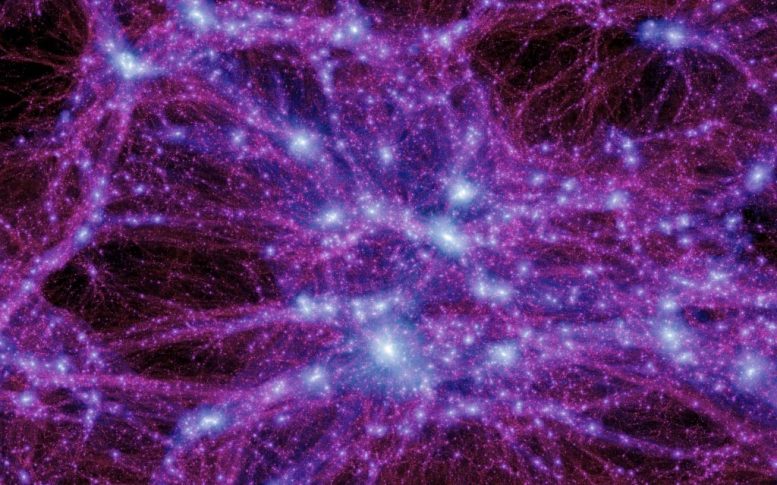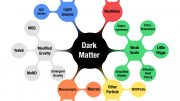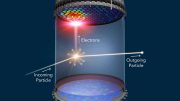
The massive gravitational pull of dark matter suggests that it constitutes approximately 85% of the universe’s total mass, however, we have yet to determine its composition.
Current experiments’ detectors and data analysis efforts could be refocused to seek out newly suggested types of dark matter signals that may have been overlooked.
Dark matter has so far defied every type of detector designed to find it. Because of its huge gravitational footprint in space, we know dark matter must make up about 85 percent of the total mass of the universe, but we don’t yet know what it’s made of.
Several large experiments that hunt for dark matter have searched for signs of dark matter particles knocking into atomic nuclei via a process known as scattering, which can produce tiny flashes of light and other signals in these interactions.
Now a new study, led by researchers at the Department of Energy’s Lawrence Berkeley National Laboratory (Berkeley Lab) and UC Berkeley, suggests new paths for catching the signals of dark matter particles that have their energy absorbed by these nuclei.
The absorption process could give an affected atom a kick that causes it to eject a lighter, energized particle such as an electron, and it might produce other types of signals, too, depending on the nature of the dark matter particle.

This image was produced by a simulation showing the evolution of dark matter in the universe. Credit: Milennium-II Simulation
The study focuses mostly on those cases where an electron or neutrino is ejected as the dark matter particle strikes an atom’s nucleus.
Published on May 4, 2020, in Physical Review Letters, the study proposes that some existing experiments, including ones that search for dark matter particles and processes related to neutrinos – ghostly, detectable particles that can pass through most matter and have the ability to change into different forms – can easily be broadened to also look for these absorption-related types of telltale dark matter signals.
Also, the researchers propose that new searches in previously collected particle detector data could possibly turn up these overlooked dark matter signals.
“In this field, we’ve had a certain idea in mind about well-motivated candidates for dark matter, such as the WIMP,” or weakly interacting massive particle, said Jeff Dror, the lead author of the study who is a postdoctoral researcher in Berkeley Lab’s Theory Group and UC Berkeley’s Berkeley Center for Theoretical Physics.

Photomultiplier tube arrays are prepared for the WIMP-hunting LUX-ZEPLIN experiment during assembly at the Sanford Underground Research Facility in Lead, South Dakota. Credit: Matt Kapust/SURF
Dark matter pushes at the boundaries of the known fundamental laws of physics, encapsulated in the Standard Model of particle physics, and “The WIMP paradigm is very easy to build into the Standard Model, but we haven’t found it for a long time,” Dror noted.
So, physicists are now considering other places that dark matter particles may be hiding, and other particle possibilities such as theorized “sterile neutrinos” that could also be brought into the family of particles known as fermions – which includes electrons, protons, and neutrinos.
“It’s easy, with small modifications to the WIMP paradigm, to accommodate a whole different type of signal,” Dror said. “You can make a huge amount of progress with very little cost if you step back a little bit in the way we’ve been thinking about dark matter.”
Robert McGehee, a UC Berkeley graduate student, and Gilly Elor of the University of Washington were study co-authors.
The researchers note that the range of new signals they are focusing on opens up an “ocean” of dark matter particle possibilities: namely as-yet-undiscovered fermions with masses lighter than the typical range considered for WIMPs. They could be close cousins of sterile neutrinos, for example.
The study team considered absorption processes known as “neutral current,” in which nuclei in the detector material recoil, or get jolted by their collision with dark matter particles, producing distinct energy signatures that can be picked up by the detector; and also those known as “charged current,” which can produce multiple signals as a dark matter particle strikes a nucleus, causing a recoil and the ejection of an electron.
The charge current process can also involve nuclear decay, in which other particles are ejected from a nucleus as a sort of domino effect triggered by the dark matter absorption.
Reference: “Directly Detecting Signals from Absorption of Fermionic Dark Matter” by Jeff A. Dror, Gilly Elor and Robert McGeheen, 4 May 2020, Physical Review Letters.
DOI: 10.1103/PhysRevLett.124.181301








Regarding Dark Matter, there may be a String Theory explanation. As you may know, quantum mechanics requires that strings must be formed as pairs in the quantum foam – a string and an anti-string – that immediately annihilate each other. Quantum mechanics also requires both the string and anti-string to be surrounded by “jitters” that reduce their monstrous vibrating energies. What if this jitter remains for a fraction of an instant after their string/anti-string annihilations? This temporary jitter would be seen by us as matter for that instant before it too returns to the foam. That’s why we never see it – the “mass” lasts only for that instant but is repeated over and over and over, all over. Specifics on this can be found in my YouTube at https://www.youtube.com/watch?v=24WyRKT8t4w
Regarding Dark Matter, there may be an Itdoesntexistium Theory explanation as well.